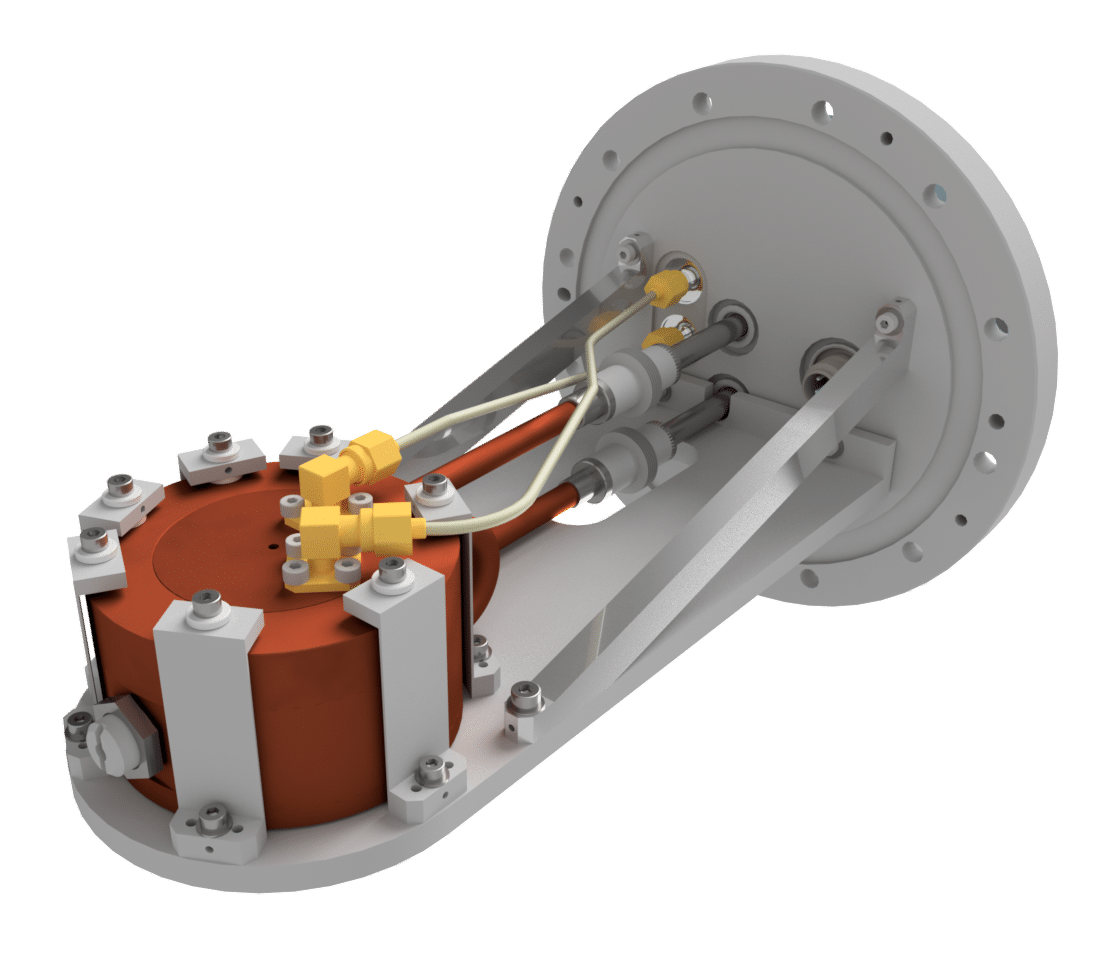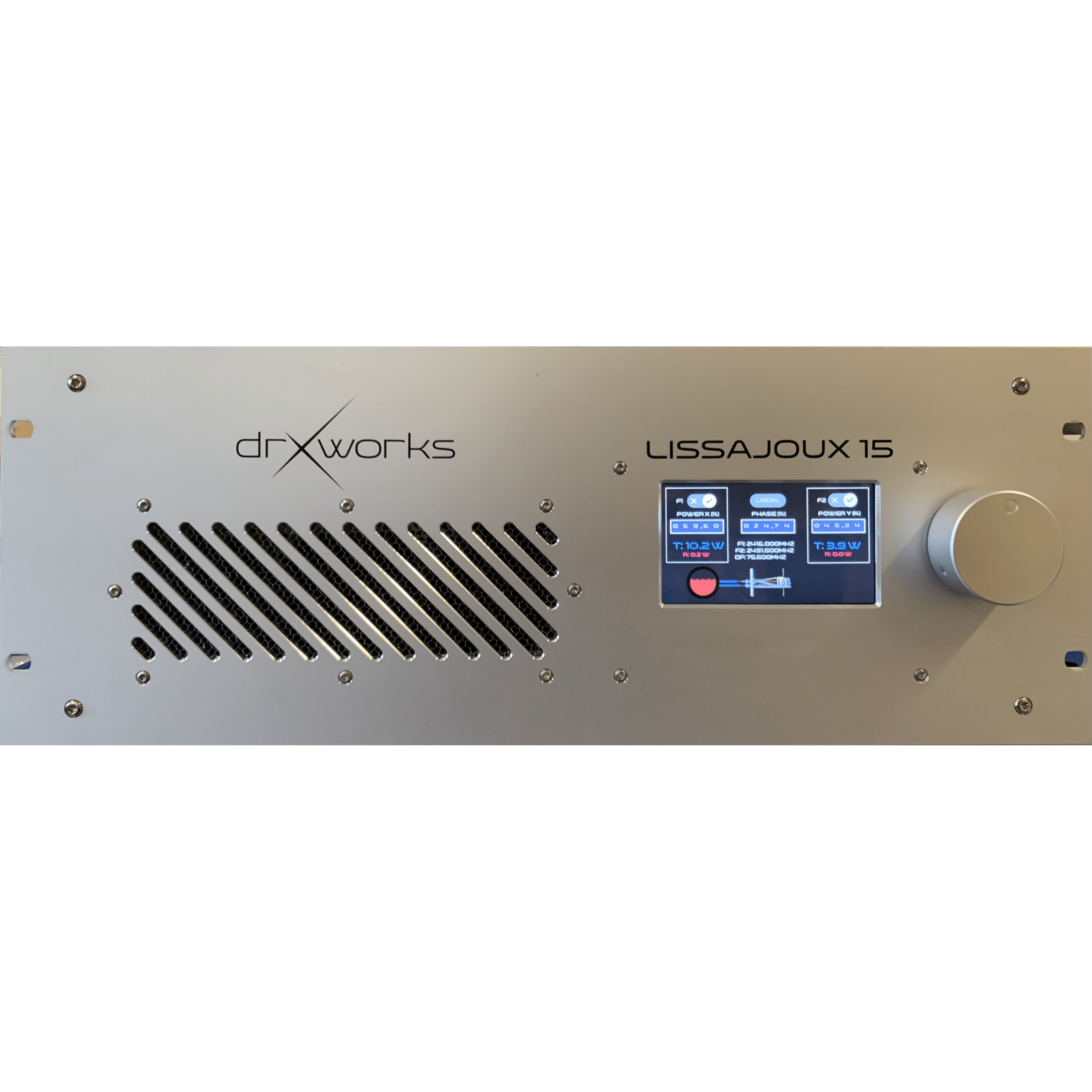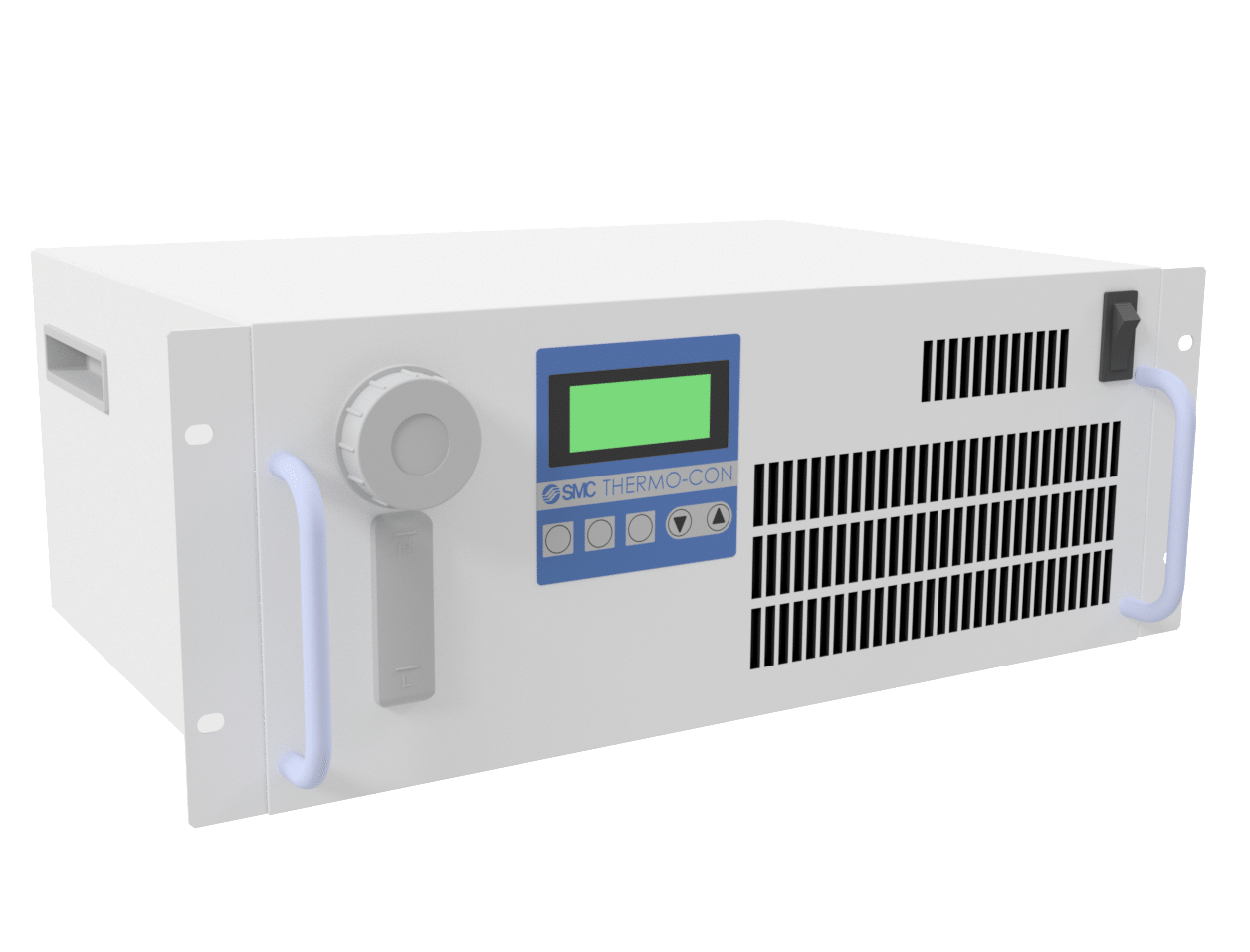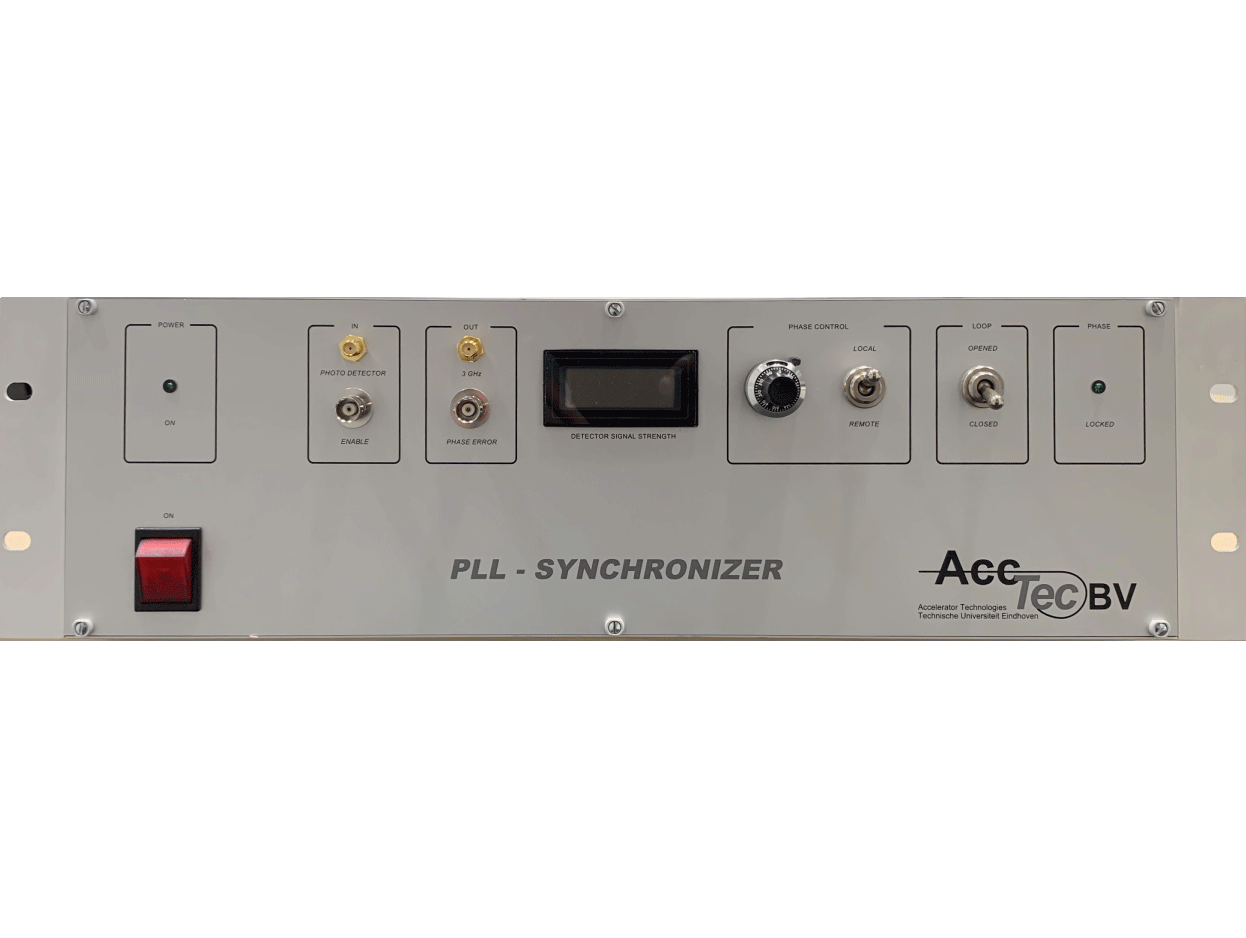Ultrafast Electron Microscopy add-on
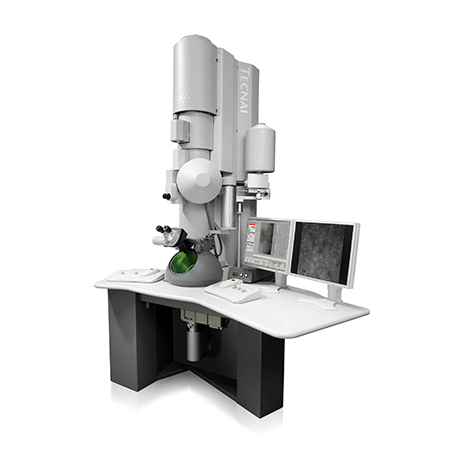
The microscopy system, developed together with Eindhoven University of Technology, enables ultrafast electron microscopy without the need for an amplified femtosecond laser to generate electron pulses by photoemission. In addition, the microscopy system allows fast switching between pulsed operation and conventional continuous operation. The microscopy system is based on a deflection cavity to chop the continuous beam from a conventional high-brightness electron gun into ultrashort electron pulses. The beam can be chopped either at 3 GHz rep rate using a deflection cavity in single mode or at 75 MHz rep rate using a deflection cavity in dual mode. To enable pump-probe experiments, the phase of the oscillating microwave fields in the deflection cavity has to synchronized to the femtosecond pump laser using the synchronizer system. The deflection cavity is part of an insert on a vacuum flange, allowing it to be mounted into the extended column of a Thermo Fisher Scientific TEM. We offer modules for both the Titan and the Tecnai system. Our microscopy system has been installed and tested in both the Titan and the Tecnai system. The deflection cavity is temperature controlled with 10-30 mK stability by water cooling and the construction of the insert minimizes mechanical vibrations of the deflection cavity. By having a cross over in the deflection cavity the growth of the emittance due to chopping is mimimized so that the peak brightness is conserved. The energy spread of the beam is also minimally affected. Therefore the spatial resolution of the TEM is the same in pulsed mode and conventional continuous mode. The microscopy system also allows low-dose-rate TEM operation in a very controlled way, which can be beneficial for mitigating radiation damage of sensitive samples.
FEATURES
- Maintaining spatial resolution
- Single mode (3 GHz rep rate)
- Dual mode (75 MHz rep rate)
- Pump probe studies
- High reliability
- Normal TEM operation when turned off
SPECIFICATIONS
| Repetition rate | 3 GHz (single mode)* / 75 MHz (dual mode)* |
| Pulse length | < 100 fs |
| * customization possible |
This System Contains
Titan Chopper
The Titan chopper module can be used to turn a Titan transmission electron microscope into an ultrafast electron microscope. We also offer modules for other electron microscopes, click here to view the other modules. This is done by streaking the DC electron beam across a slit using a deflection cavity operated in TM-110 mode. The deflection cavity is a compact, single-cell, power-efficient resonant microwave cavity, supporting a TM-110 mode at a resonance frequency of 2.9985 GHz and a second mode which is orthogonal to the first mode oscillating at a frequency of 3.0735 GHz (difference 75 MHz). Both modes have an unloaded quality factor that can be as high as Q ≈ 5000. The deflection cavity is a pillbox cavity partially filled with a dielectric material with a large permittivity ε and a small tan δ, which allows a substantial reduction in size and power consumption. Additionally the dielectric can be coated to prevent charging due to the electron beam passing through. Operating at full power the module can deliver 100 fs electron pulses while maintaining the electron beam quality. This can either be done at a repetition rate of 3 GHz or 75 MHz depending on single or dual mode operation, respectively.
Lissajoux 15
RF Microwave driver for the dual mode deflection cavities. The two channel driver is able to deliver 16W RF power for each channel. The first channel operates at a frequency of 3.000 GHz and the second channel at 3.075 GHz. The amplitude of each channel can be set independently. The driver also allows for changing the phase between the channels. The reflected and transmitted power on each channel can be monitored via the LCD screen.
Temperature Controller
The temperature controller makes sure that our cavities stay on resonance when RF power is applied. When a RF cavity expands the resonance frequency of the cavity will change which will result in less absorbed RF power. The phase of the RF fields also changes with temperature so it is of great importance that the temperature of the cavity is actively monitored an stabilized using the temperature controller. This is done by measuring the temperature of the cavity using a Pt100 temperature sensor which is the input for the control loop that stabilizes the cavity temperature by either heating or cooling the water that flows through the copper heatsink which is directly connected to the cavity. The temperature control unit is fully integrated in our Statera microwave driver.
Synchronizer
To achieve 100 fs temporal resolution in pump probe studies the RF phase has to be synchronized to within 100 fs with the femtosecond laser, which can be done with our synchronizer. The synchronizer is designed to synchronize a 3 GHz RF oscillator to a mode-locked 75 MHz Ti:Sapphire laser system with less than 100 fs phase jitter.
Cavity Cable Kit
The cable kit contains all the necessary cables to operate the cavity. We provide phase stable cables, insulated water cooling tubing and a temperature sensor cable.

